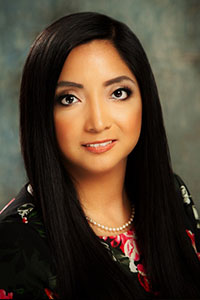
Katherine Barko-Alva
Co-Director
Associate Professor of ESL/Bilingual Education:
Office:
236 Blow Hall
Phone:
757-221-6073
Email:
[[kbarkoalva]]
Research and Teaching Focus
Dr. Katherine Barko-Alva is an Associate Professor and Director of the ESL/Bilingual Education program at William & Mary, School of Education in Williamsburg, Virginia. Katherine Barko-Alva, a former McKnight fellow at the University of Florida, holds a Ph.D. in Curriculum and Instruction in the area of ESL/Bilingual Education.
As a bilingual scholar, her research agenda is rooted in classroom practices and explores how Dual Language Bilingual Education (DLBE) /English as a Second Language (ESL) educators make sense of language in culturally and linguistically diverse (CLD) K12 contexts, how to promote equitable and inclusive practices in order to serve CLD students and their families, and how to create sustainable practices to prepare DLBE/ESL in-service and preservice teachers. With more than fourteen years of professional experience teaching as well as designing and implementing job-embedded professional development practices at the national and international level, her lived experiences as an English learner in a U.S. school guide the nature of her work and commitment to families, teachers, and students.
Dr. Barko-Alva has been awarded the Virginia Latino Advisory Board Latinx Leadership Award in Education and the Janet Brown Strafer Award (William & Mary, School of Education) recognizing her efforts promoting equitable and inclusive learning spaces in our classrooms and community. At the national level, she has been selected as a member of the iCivics ESL National Advisory Council to support making civics education accessible for ELs using videogame platforms. Her latest book published by Teachers College Press Columbia University examines fossilized practices within today’s educational system that marginalize and devalue the contributions and cultural biographies of families, particularly CLD families. This book creates opportunities for reflection and provides suggestions for school communities seeking to re-envision the meaning of family engagement















